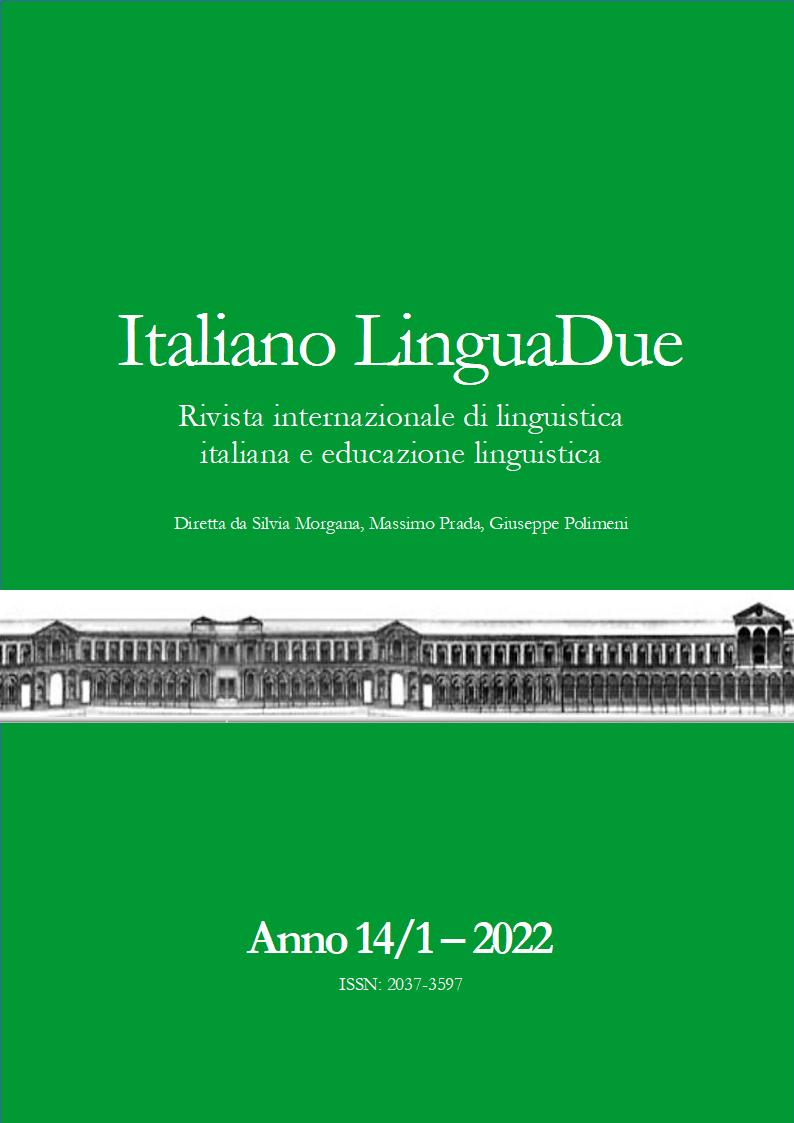IL TESTO COME INTRECCIO DI GERARCHIE
DOI:
https://doi.org/10.54103/2037-3597/18315Abstract
Un testo ben scritto è caratterizzato da una vera e propria architettura, la quale è in sintonia con i suoi obiettivi comunicativi, con la tipologia a cui appartiene, con altri testi con cui dialoga, con il contesto in cui si manifesta, con le conoscenze e le aspettative del lettore. Una delle caratteristiche di fondo di questa architettura è la sua profonda costituzione gerarchica, la quale si applica alle sue unità secondo diversi principi. Così per esempio, c’è una gerarchia che distingue il piano principale del testo da quello degli incisi; c’è una gerarchia che interessa gli enunciati che formano il piano principale del testo, la quale è definita dalla sua progressione tematica e logico-argomentativa; c’è una gerarchia che caratterizza, a un livello più microscopico, il contenuto interno dei singoli enunciati, che viene ad articolarsi in informazioni in primo piano e informazioni sullo sfondo comunicativo. Le diverse gerarchie si disegnano a partire da indicazioni date dalla lingua – lessicali, sintattiche, interpuntive – e da operazioni inferenziali che chiamano in causa vari tipi di conoscenze extralinguistiche. L’obiettivo di questo intervento consiste nel tratteggiare l’intreccio di gerarchie che caratterizza i testi coerenti e coesi, e ciò sulla base di una serie di esemplificazioni tratte da testi autentici. Imparare, e poi insegnare, a riconoscerlo è fondamentale sia nell’ottica di una didattica della lettura sia in quella di una didattica della scrittura. E questo per quanto riguarda tutti i tipi di testi. Si pensi paradigmaticamente al riassunto, che – essendo un testo che elabora un altro testo – combina lettura e scrittura. Nella sua elaborazione, una grossa parte del lavoro consiste infatti proprio nel riconoscere ai diversi livelli le informazioni principali e quelle secondarie: nello sfrondare cum grano salis le seconde e nel riunire, combinare, generalizzare le prime.
The text as a intertwine of hierarchies
A well written text is characterized by a real architecture, which is in tune with its communicative objectives, its typology, with other texts it dialogues with, with the context where it manifests, with the reader’s knowledge and expectations. One of the basic characteristics of this architecture is its deep hierarchical constitution, which is applied to its units according to different principles. Thus, for example, there is a hierarchy that distinguishes the main level of the text from the asides; there is a hierarchy that affects the utterances that form the main level of the text, defined by its thematic and logical-argumentative progression; at a more microscopic level, there is a hierarchy that characterizes the internal content of the individual utterances, which is articulated into information in the foreground and information in the communicative background. The different hierarchies are drawn from indications given by the language - lexical, syntactic, interpunctual - and from inferential operations that involve various types of extralinguistic knowledge. The aim of this paper is to outline the interweaving of hierarchies that characterizes coherent and cohesive texts on the basis of a series of examples taken from authentic texts. Learning, and then teaching, how to recognize it is fundamental both for the teaching of reading and for the teaching of writing. This applies to all types of texts. Think paradigmatically of the summary, which - being a text that elaborates another text - combines reading and writing. In its elaboration, a large part of the work consists, in fact, in recognizing the main and secondary information at different levels: in pruning the latter cum grano salis and in reuniting, combining and generalizing the former.
Dowloads
Pubblicato
Versioni
- 2022-07-28 (2)
- 2022-07-18 (1)




